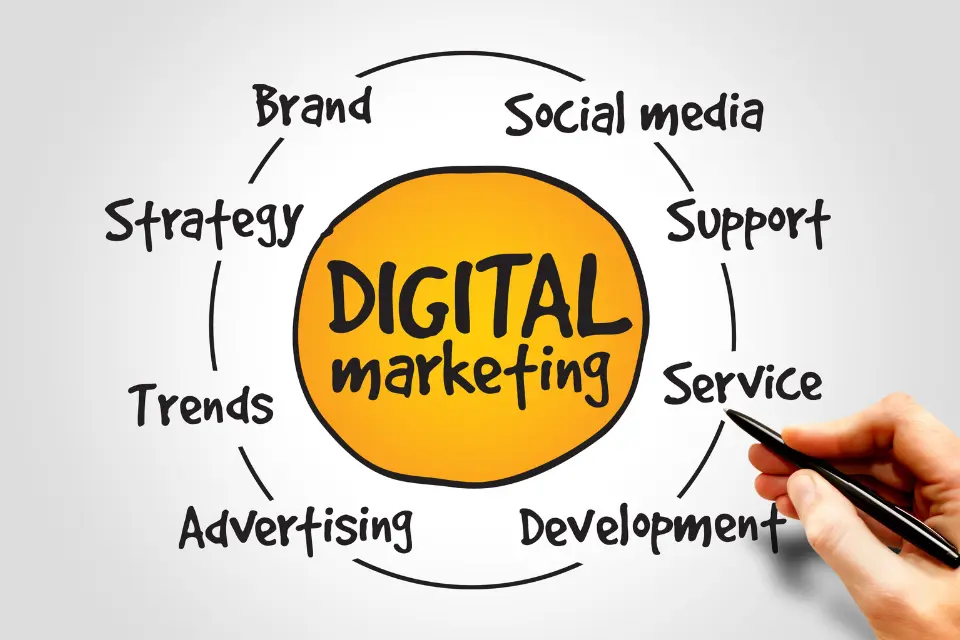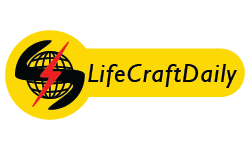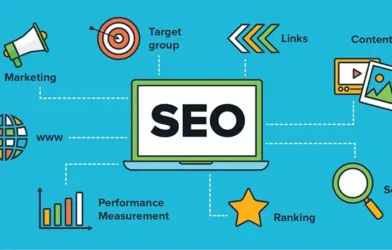Introduction
Marketing is essential for any business aiming to thrive in today’s competitive landscape. However, the marketing industry has changed significantly since the invention of technology. Understanding the differences between digital marketing and conventional marketing is crucial for anyone looking to excel in the modern marketing world. In this article, we will dive deep into how these two forms of marketing differ and why digital marketing has become a game-changer.


Contents
| Introduction |
| What is Conventional Marketing? |
| What is Digital Marketing? |
| Reach and Accessibility |
| Cost-Effectiveness |
| Measurability and Analytics |
| Interactivity and Engagement |
| Speed and Flexibility |
| Global vs. Local Reach |
| Content Types and Formats |
| Case Studies: Success in Digital Marketing |
| Challenges in Digital Marketing |
| Future Trends in Marketing |
| Conclusion |
Introduction to Digital Marketing
Marketing has always been about connecting with your audience in the right place and at the right time. Technology is developing at a quick pace, so there are more and more sites and ways to engage with your audience.. This article explores the key differences between digital marketing and conventional marketing, highlighting how digital marketing has transformed the business world.
What is Conventional Marketing?


Image Source: Google
Conventional marketing, also known as traditional marketing, refers to the promotion of products and services through offline channels that have been used for decades. This includes:
- Print Advertising: Newspapers, magazines, brochures, and flyers.
- Broadcast Advertising: Television and radio commercials.
- Outdoor Advertising: Billboards, posters, and transit advertising.
- Direct Mail: Catalogs, postcards, and mailers.
- Telemarketing: Telephone-based marketing efforts.
Conventional marketing has roots in the earlier days of mass communication and has been the foundation of marketing strategies for many years.
What is Digital Marketing?
In simple words it is the promotion of products or services using digital channels. It leverages the internet and electronic devices to reach consumers. Key components include:
- Search Engine Optimization (SEO): Enhancing website visibility in search engines.
- Content Marketing: Creating and distributing valuable content.
- Social Media Marketing: Promoting through social media platforms like Facebook, Instagram, and Twitter.
- Email Marketing: Sending targeted emails to prospects and customers.
- Pay-Per-Click (PPC) Advertising: Online ads where advertisers pay each time their ad is clicked.
- Affiliate Marketing: Promoting products through affiliates.
In short it is highly dynamic, data-driven, and allows for real-time interaction and feedback.
Reach and Accessibility
Conventional Marketing relies heavily on broad-reaching channels such as TV, radio, and print media. While it can reach a large audience, it’s not always targeted, meaning the message is broadcasted to a wide array of people, not all of whom may be interested in the product or service.
- Often geographically limited to specific regions.
- Relies on physical distribution channels.
- Less accessible for small businesses due to high costs.
Digital Marketing, however, allows for precise audience targeting. With tools like SEO, social media ads, and email marketing, businesses can reach specific demographics based on age, location, interests, and behavior. This targeted approach ensures that marketing efforts are more efficient and effective.
Cost-Effectiveness
Conventional marketing methods can be quite expensive. Think about the cost of a prime-time TV ad, a full-page newspaper spread, or a large billboard. These expenses can quickly add up, especially for small businesses with limited budgets.
Digital marketing is generally more cost-effective. With options like social media marketing and email campaigns, businesses can reach a large audience without breaking the bank. Even paid digital ads, such as PPC, often provide a better return on investment compared to traditional methods.
Measurability and Analytics
How do you know if a billboard ad or a TV commercial was successful? With conventional marketing, measuring effectiveness can be challenging and often relies on indirect metrics like sales figures or customer surveys.
Digital marketing shines in this area. Almost every aspect of a digital campaign can be tracked and analyzed in real time. Tools like Google Analytics provide insights into website traffic, user behaviour, conversion rates, and much more. This data allows businesses to 0ptimize their strategies for better results.
Interactivity and Engagement
One major limitation of conventional marketing is the lack of interaction with the audience. It’s a one-way street: the business sends out the message, and that’s the end of the interaction.
Digital marketing, however, thrives on interaction. Social media platforms allow businesses to engage directly with their audience, respond to comments, and build a community. Email marketing campaigns can be personalized and interactive, encouraging recipients to take specific actions.
Speed and Flexibility
Conventional marketing campaigns require significant time for planning, production, and execution. Once an ad is printed or a commercial is aired, making changes is nearly impossible until the next cycle.
Digital marketing is incredibly flexible and fast. Campaigns can be launched within hours, and adjustments can be made on the fly based on real-time performance data. This agility allows businesses to respond quickly to market trends and customer feedback.
Content Types and Formats
Conventional marketing relies on static content formats such as print ads and TV commercials. While these formats can be effective, they don’t offer much room for creativity beyond the initial design.
Digital marketing offers a plethora of content formats, from blog posts and videos to infographics and interactive quizzes. This variety not only keeps the audience engaged but also allows businesses to experiment and see what resonates best with their target audience.
Case Studies: Success in Digital Marketing
Here’s a quick case study on how brands and businesses have shifted their focus from only conventional marketing to both conventional and Digital marketing.
Coca-Cola’s “Share a Coke” Campaign
Coca-Cola’s “Share a Coke” campaign is a prime example of digital marketing success. By personalizing bottles with popular names and encouraging customers to share their experiences on social media, Coca-Cola created a viral sensation that significantly boosted sales and brand engagement.
Nike’s Digital Transformation
Nike has successfully transitioned to digital marketing by leveraging social media, influencer partnerships, and content marketing. Their Nike Training Club app and personalized email campaigns have strengthened their customer relationships and driven online sales.
Future Trends in Marketing
The future of marketing is poised to be even more digital and data-driven. Emerging trends include:
- Artificial Intelligence (AI): AI-powered tools for personalization and predictive analytics.
- Voice Search Optimization: Adapting content for voice-activated devices like smart speakers.
- Augmented Reality (AR): Creating immersive experiences for customers through AR technology.
Conclusion
In conclusion, understanding the differences between digital marketing and conventional marketing is essential for anyone looking to build a successful career in the marketing field. Digital marketing offers unprecedented opportunities for precise targeting, cost-effectiveness, engagement, and measurability. As the digital landscape continues to evolve, staying informed and adaptable will be key to leveraging these opportunities effectively.
FAQs
1. What are the main differences between digital marketing and conventional marketing?
Digital marketing uses online platforms and technologies for precise targeting, cost-effective campaigns, and real-time analytics, whereas conventional marketing relies on traditional media like TV, print, and radio, often with broader, less targeted reach.
2. Why is digital marketing more cost-effective than conventional marketing?
Digital marketing often requires lower upfront costs and provides better ROI through targeted ads and measurable results, unlike the high costs associated with traditional media buys and production.
3. How can businesses measure the success of digital marketing campaigns?
Businesses can use tools like Google Analytics, social media insights, and email marketing software to track metrics such as website traffic, conversion rates, and engagement levels in real-time.
4. What challenges do digital marketers face?
Digital marketers face challenges such as staying updated with rapidly changing trends, managing data privacy concerns, and standing out in a highly competitive online environment.
5. What future trends should digital marketers be aware of?
Digital marketers should watch for trends like AI integration, voice search optimization, video marketing and much more.




